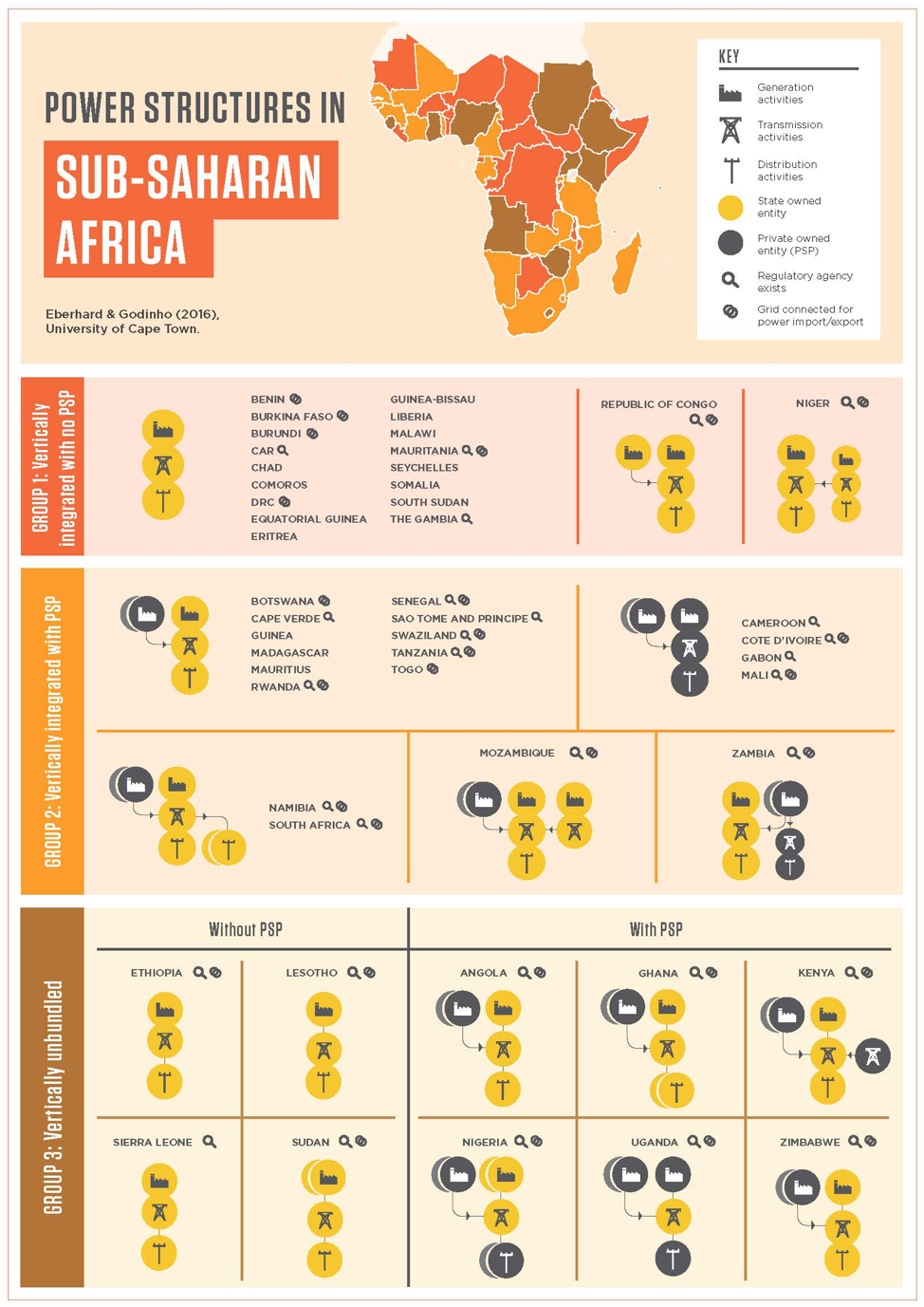Over the past 30 years, many countries in Sub-Saharan Africa have introduced market-oriented reforms geared at addressing structural obstacles to power sector development. Reforms generally centre around four elements, together known as the ‘standard model’ of reform:
- Independent regulation supports the rationalization of tariffs and reduces opportunities for political interference in tariff-setting.
- Commercialization of power utilities allows for the separation of policy, governance, and management functions and introduces corporate governance at power utilities.
- Unbundling power utilities removes conflicts of interest along the value chain and allows for competition in competitive segments (i.e., generation and distribution) to promote least-cost development decisions.
- Opening the sector to private sector participation (PSP) in order to attract alternative forms of finance, expertise and technology transfer, while fostering competition.
- Regionalizing electricity trading as a means to increase energy security and regional integration.
However, very few countries in Sub-Saharan Africa have implemented these reforms extensively. In the figure below, the status of market-oriented power sector reforms in Sub-Saharan Africa (as of 2016) is depicted. Countries are divided into three groups, according to structure and private sector participation:
- Unreformed – traditional state-owned, vertically integrated utility model persists in 19 countries.
- Vertically integrated with private participation – the traditional model remains but allows for some PSP in 19 countries, primarily through Independent Power Producers (IPPs) or small utilities that serve single industrial customers. These are almost always very low market share.
- Partially or Fully Unbundled – the smallest and most diverse group, only 10 countries implemented some form of vertical unbundling, most in this group allow for private sector participation through IPPs and/or concessions.
In all three groups, most utilities – whether unbundled or not – remain under state ownership and control, and privatisation, mostly in the form of a private concession, is present in only a few countries.

